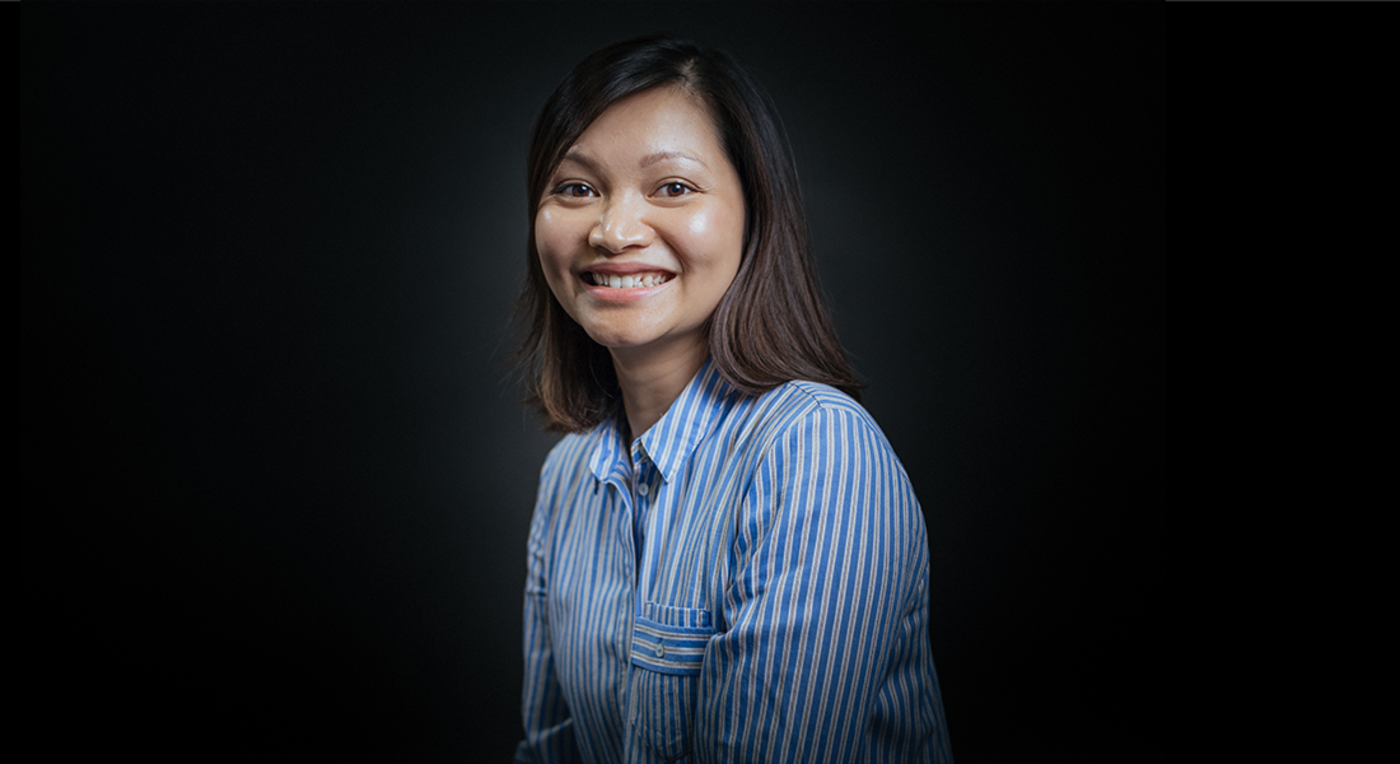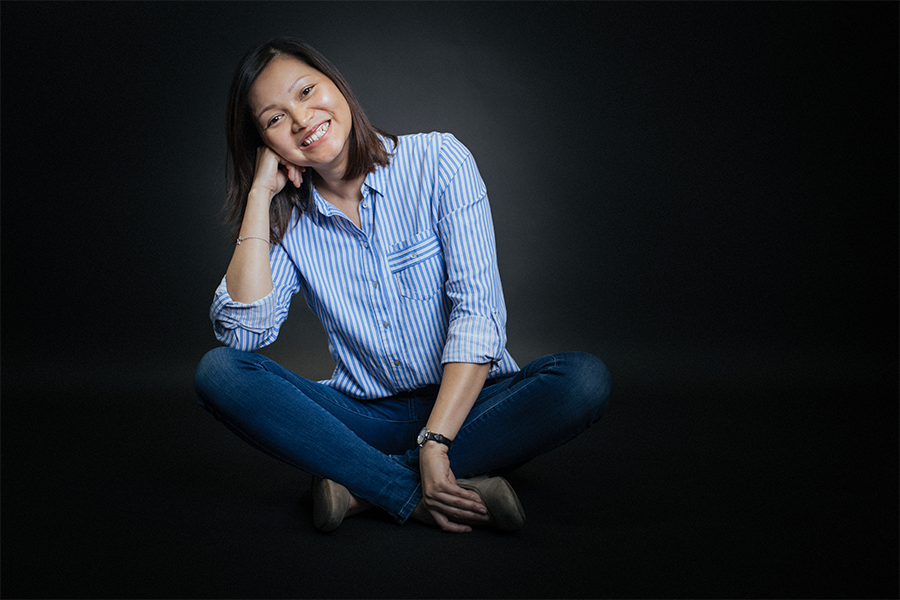
Taking time out to climb up walls: for Anh, one of her favourite after-work activities. Whenever possible, the 32-year-old UX designer from EDAG aeromotive goes to "Schwerkraft", the bouldering centre in Ingolstadt. Without a safety harness, this wiry power woman works her way up through a course studded with multi-coloured hand and foot holds. Below her is a soft mat - just in case.
The ease with which Anh climbs, along with her indestructible cheerfulness, somehow seem to be inborn characteristics. She was 14 when she came to Germany from Vietnam. She first applied herself to learning the language, then, full of curiosity, launched herself into life: from Baden-Württemberg, Anh moved to Bremen, where she attended school and qualified for university entrance.
"I have always enjoyed bringing creativity and technology together in a fun way," she says. For example in pen & paper role playing games with friends. These involve a group of six to eight people taking part in a fictional adventure and unravelling difficult mysteries. Using pen and paper. Or online. "This sharpens the senses for the structure of a task, and helps the participants to interact and explain how to reach the target in a way that everyone understands."
How do you take an interest like this and turn it into a profession? Anh found the answer at the Technical University of Ingolstadt in the UX design degree course, which is all about the application of UX methods, the analysis and design of the user experience, i.e. the experience a user has with a product. "UX designers have to be universalists," states Anh. "In order to provide users with a reliable tool, we need not only to understand the essential features of the technology and software used, but - most important of all - to understand the user himself, as well as his actual and potential needs." Everyday professional life always involves a healthy dose of psychology. "Talking to each other, being able to listen and being empathetic - these are essential components of good UX design," Anh knows.
Anh was still a student the first time she had anything to do with aircraft. A university project carried out with Airbus gave her the opportunity to work on the design of a new cockpit. Her curiosity was aroused. From there to EDAG aeromotive was no longer a huge step.
Anh has been with the company for a year now, and is part of a young team of five. "This is such a stroke of luck for me. We get on really well together, have a great working atmosphere, and also do a lot together in our spare time," she says with enthusiasm. And the fact that the tasks and challenges of her working day are extremely varied suits her perfectly. These range from the development of interactive prototypes for desktop applications and information and control tools for pilots through to virtual reality.
Something that really interests Anh is VR: "I am totally fascinated by the concept of integrating 3D models into the virtual world and combining them with interactions." Virtual Reality is for her a great playground for creativity, where people can create their own worlds and experiences

The user interfaces Anh is working on will quickly and reliably provide pilots with any information about the flight and technology that might be relevant to them. As a UX designer, she needs to know the pilots' expectations and requirements for their displays. For instance: what do they understand about the process concerned? How much information do they need in flight operations, in what depth, and what attention resources are available to them? Where do their possibilities and limits for intuitive action lie? And of course: which safety and legal regulations will have to be observed?
UX design solutions are influenced to a significant extent by basic rules of human perception. Anh puts this idea in a nutshell. Rule number one: Emotionality wins - "The more emotions a design conveys, the easier it is to operate a system and remember a context." Rule number two: Less is more. "Freely adapted from the motto: an icon says more than a thousand words." Rule number three: user first! It isn't the user's fault if something doesn't work. UX design is not an end in itself, but is always on the side of the user. We make sure that, in the end, a product reliably does what it is supposed to do. With no ifs and buts."
For Anh, this is all a bit like bouldering. "If you want to achieve your goals, you need an inner compass, a clear strategy, sound knowledge and creativity." And always a good dose of courage. Like you do at the "Schwerkraft" centre. Anh is hanging to the wall almost three metres above the ground, and is making her way - step by step, hold by hold, with a winning smile. Simple.